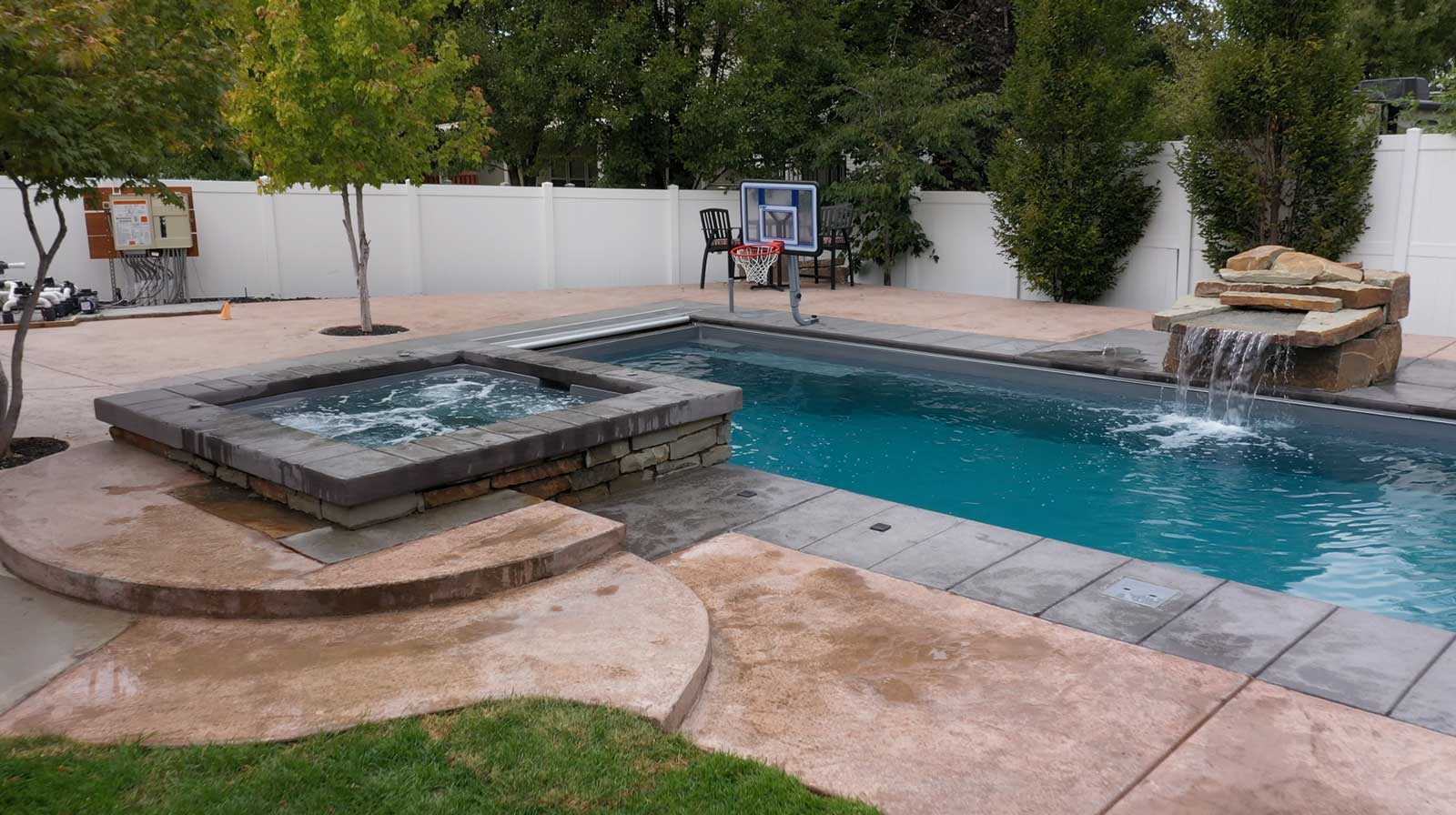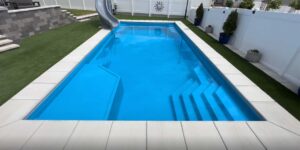A fiberglass spa can be a luxurious and relaxing addition to any backyard, especially when paired with a swimming pool. However, there are many factors to consider when choosing a fiberglass spa, from design options to practical maintenance in challenging climates like Utah’s cold winters. Here’s an expanded guide to help you make the right decision:
1. Integrated Fiberglass Spas
Some fiberglass pools come with an integrated spa built directly into the pool shell. While this is the most economical option, it comes with specific trade-offs:
Advantages:
- Lower installation cost compared to separate spa setups.
- A cohesive, streamlined design that blends seamlessly with the pool.
Disadvantages:
- Reduces the overall space available for swimming and other pool activities, which may not suit households that prioritize active pool use.
- Using and maintaining the spa in winter can be challenging because the entire pool system must be winterized, limiting year-round spa enjoyment.
2. Extended Spas Attached to the Pool
A fiberglass spa can also be installed as an extension of the pool, offering a middle-ground solution:
Advantages:
- Allows for a better balance between pool and spa space.
- Can often share heating and filtration systems with the pool, which can be cost-effective.
Disadvantages:
- May still be subject to the same winterization challenges as an integrated spa.
- Requires careful planning to ensure seamless integration and proper insulation.
3. Separate Fiberglass Spas
The best option for year-round usability is a spa that is completely separate from the pool:
Advantages:
- Operates independently, making it easy to use and maintain in winter without affecting the pool.
- Can have its own automated cover, which improves insulation, reduces energy costs, and keeps the spa clean.
- Offers flexibility in design and placement, allowing you to optimize space and aesthetics.
Disadvantages:
Higher initial cost due to the need for separate plumbing, heating, and filtration systems.
4. Consider Spa Placement and Winterization
Utah’s freezing winters pose unique challenges for spa installations:
Above-Ground Fiberglass Spas:
- These are more exposed to freezing conditions, making them susceptible to damage in extreme cold.
- Additional insulation and protection measures may be needed, increasing maintenance costs.
In-Ground Fiberglass Spas:
- Building the spa at the same level as the pool offers better protection for jets, pipes, and other components.
- In-ground placement minimizes exposure to freezing temperatures and reduces the risk of damage.
5. Hot Tub vs. Fiberglass Spa
Some homeowners opt for a standalone hot tub instead of a fiberglass spa. While hot tubs have their benefits, they also come with trade-offs:
Hot Tub Pros:
- Fully self-contained and easy to install.
- Operates independently, making it ideal for year-round use.
- Often includes advanced features like massage jets, LED lighting, and Bluetooth speakers.
Hot Tub Cons:
- Runs on electricity, which can make heating more expensive compared to in-ground fiberglass spas that use natural gas.
- Requires frequent use of chemicals to maintain water quality, whereas fiberglass spas often use a saltwater system with fewer chemicals.
6. Saltwater Systems vs. Traditional Chemicals
Fiberglass spas often come with a saltwater chlorination system, which is a cleaner and more eco-friendly alternative to traditional chlorine:
Benefits of Saltwater:
- Gentle on the skin and eyes, making it ideal for frequent use.
- Requires less maintenance and fewer chemical additives.
- Provides a natural and luxurious spa experience.
Traditional Chemicals:
- While effective, they require more frequent testing and adjustments.
- Can be harsh on the skin, especially for users with sensitivities.
By carefully considering the type of spa, placement, and maintenance needs, you can create a relaxing and practical addition to your pool that fits your lifestyle and withstands the challenges of Utah’s winters. Whether you choose an integrated, extended, or separate fiberglass spa—or opt for a hot tub—each option has unique advantages tailored to different preferences and budgets.


